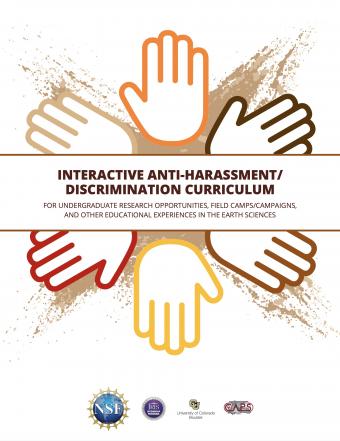2h Intermediate

This activity is part of the National Association of Geoscience Teachers'
On the Cutting Edge - Exemplary Collection
In support of the geoscience community’s attentiveness to developing a more inclusive culture that is resistant to harassment and discrimination, a collaborative effort to develop an anti-harassment/discrimination curriculum is underway. The curriculum is designed to be engaging and educative for undergraduate students, who may have little formal training in the terminology and concepts surrounding such topics, are likely to be unaware of policies and procedures regarding harassment, discrimination, and fraternization, are unlikely to know how to respond if they were to witness an incident of discrimination or harassment, and unlikely to know how to report incidents. Through this curriculum we seek to empower students, who might otherwise be vulnerable.
We also designed this curriculum to be a practical and approachable resource to inspire, encourage, and enable program facilitators, faculty, and other community leaders to engage with their students around these important topics to change our community’s culture.
*We are grateful for the pilot participants and external expert reviewers. All of their feedback has significantly improved of the curriculum.
Status: This version, 2.0 (May, 2021).
Use and Feedback Encouraged: This curriculum has been developed for use by those who facilitate undergraduate research opportunities, field camps/campaigns, and other educational experiences in the Earth sciences. We view the curriculum as a community resource and encourage others to use the resource and contribute to its development! (hubenth "at" iris.edu)
Following instruction, participants will be able to:
We encourage the reuse and dissemination of the material on this site as long as attribution is retained. To this end the material on this site, unless otherwise noted, is offered under Creative Commons Attribution (CC BY 4.0) license